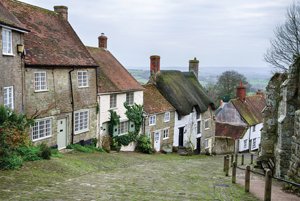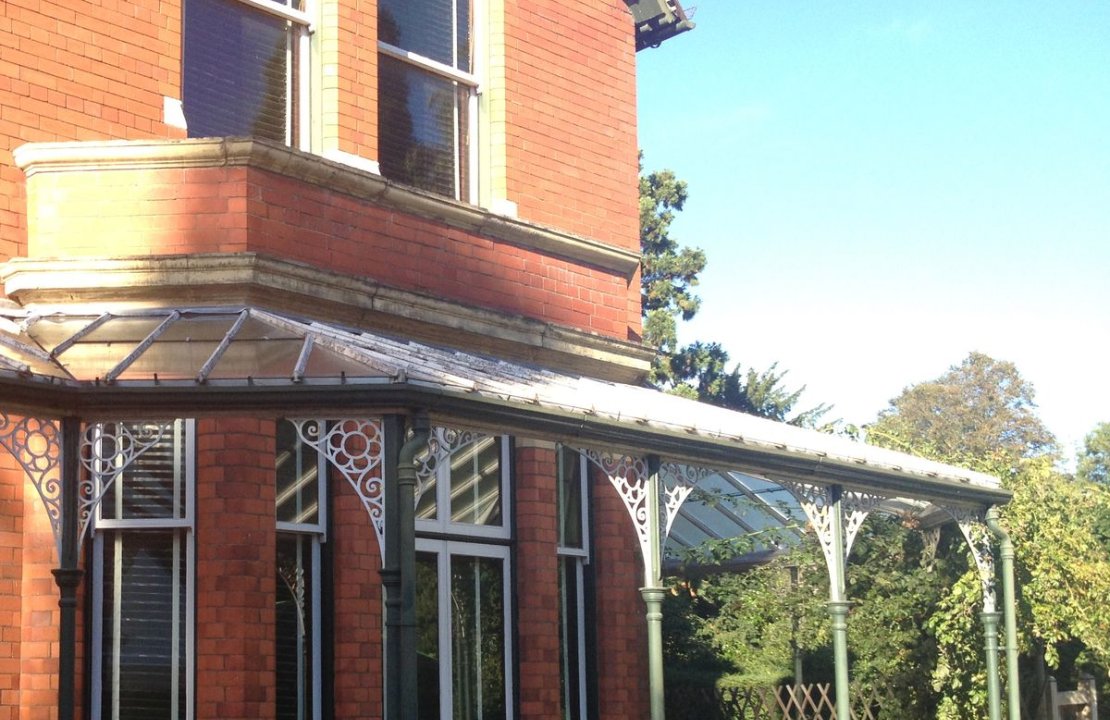This article was written by Roger Hunt, who is an award winning writer and blogger specialising in sustainability, old houses, housebuilding and traditional and modern building materials. He is the co-author of both Old House Handbook and the companion volume Old House Eco Handbook.
Can Victorian houses really be green without losing their character?
Yes! As I say in my lectures it’s about balancing the needs and attributes of the building with the need for performance and comfort.
What's your background/experience in this field?
I ‘helped’ my father insulate the loft by carrying in the bags of insulation material when I was seven (but that probably doesn’t count) and have been intrigued by building techniques and materials ever since. I started writing about old buildings and their construction more than 20 years ago and have done a number of major renovation projects, the first of which was a 1901 terrace house. I’m the co-author, with Marianne Suhr, of Old House Handbook and the recently published companion volume Old House Eco Handbook. Both are published in association with the Society for the Protection of Ancient Buildings (SPAB) by Frances Lincoln. As a writer, one’s in the fortunate position of being able to speak to a huge number of homeowners and professionals as well as suppliers, manufacturers and people doing research, so it’s possible to build up a really useful picture of what does and doesn’t work both in theory and practice. This is particularly important when it comes to looking at eco solutions for old buildings. A lot of the ideas are new and we still don’t know the full implications of things like adding internal wall insulation.

What are your top 5 'must dos'?
- Do think first and do live with the building and understand it before rushing in and making mistakes.
- Do make a plan and take a holistic approach. You need a ‘roadmap’ so you can plan your ‘eco’ strategy in the long term. It’s important to understand that by doing one thing you can cause a problem in another area. For example, if you block up draughts you need to ensure that there is adequate controlled ventilation otherwise you will have condensation problems and poor internal air quality. Similarly, if you’re installing a new boiler, you need to think whether you might want to install solar thermal panels in the future. If you are, make sure the heating system you install now will be able to work with them.
- Do buy and use an energy monitor. It will help you understand where the energy is being used and how much it’s costing.
- Do avoid quick fixes and remember that modern materials aren’t always compatible with old buildings - avoid being persuaded by salesman selling inappropriate windows.
- Do carry out regular maintenance. This is the most important single thing you can do. It will save wasteful replacement and the cost of major repairs. Water is the biggest cause of damage to buildings of all ages so clear out gutters and downpipes and inspect drains and roofs. Remember, wet walls are cold walls: up to 40% more heat is lost through a damp wall than a dry wall.
How much would these cost?
These simple measures don’t necessarily cost very much and can save you money in the long run.
What are the easy wins - a low investment but give a big benefit?
Insulting the loft, draughtproofing between floorboards and elsewhere, fitting energy efficient light bulbs, overhauling the heating system and fitting secondary glazing.
What things can the diyer do themselves without involving the trades?
Jobs like draughtproofing and loft insulation don’t take much time and are relatively easy to do. Depending on the system, fitting secondary glazing can be a diy job but overhauling and draughtproofing old windows is generally best left to a good joiner or specialist window company.
Do green improvements increase the value of a house?
Yes and no. If they’re done well and sensitively they will not devalue a property and may add value. I suspect that Energy Performance Certificates (EPCs) will play an increasing part in buyer’s purchasing decisions in the future so properties with good ratings may fare better. Do remember that inappropriate solutions can make a property harder to sell and may devalue it. An English Heritage survey revealed that 82% of estate agents felt original features like sash windows add financial value to a property.
Which organisations might be able to help?
Energy Saving Trust (energysavingtrust.org.uk)
Historic Scotland (historic-scotland.gov.uk)
Society for the Protection of Ancient Buildings (SPAB) (020 7377 1644; spab.org.uk)
What will people learn if they attend your course?
In the rush to be ‘eco’, compatibility between traditional buildings and modern technologies and materials can be mistakenly ignored. The SPAB Old House Eco Course will explain how to avoid potential problems and will consider an holistic approach to retrofitting, while presenting a background to the latest building science with practical advice and examples of best practice.
The Course will be relevant primarily for owners of period properties (pre-1919), but also for professionals who may need to brief their clients (homeowners) on improving the energy efficiency of their buildings. There will also be an opportunity to present questions to a Panel of building conservation experts, and to speak to a SPAB Technical Adviser. Delegates will receive a signed copy of Old House Eco Handbook.
Topic covered during the day will include:
• Walls
• Windows and doors
• Roofs, ceilings and floors
• Energy and water
• Case studies
Roger Hunt blogs at www.huntwriter.com and Tweets at @huntwriter. Visit https://www.spab.org.uk/ for more details of Roger's courses.
For more tips and advice from some of our customers, have a read of our article "Things I wish I'd known before buying my period house". You can read our ultimate guide to period property renovation here.

Be the first to add a comment...